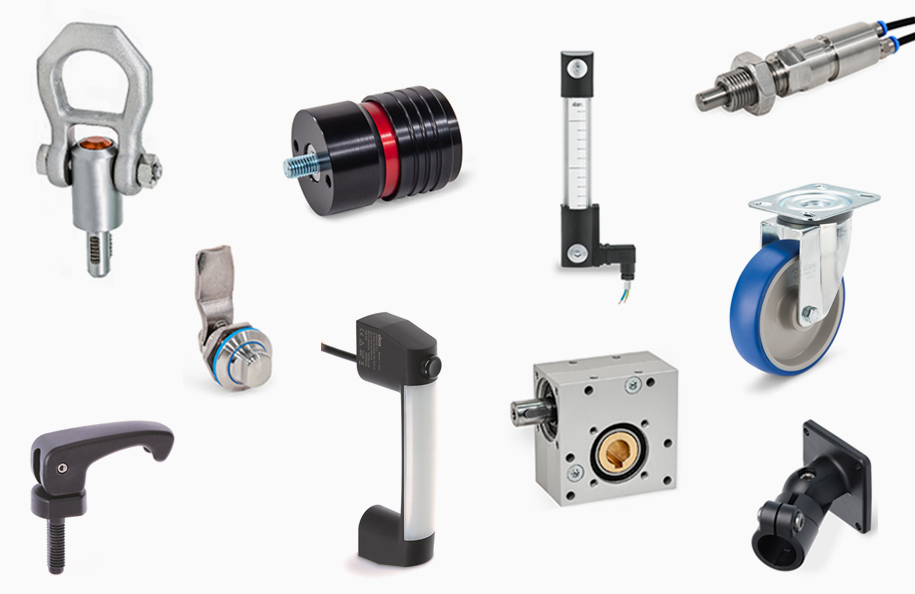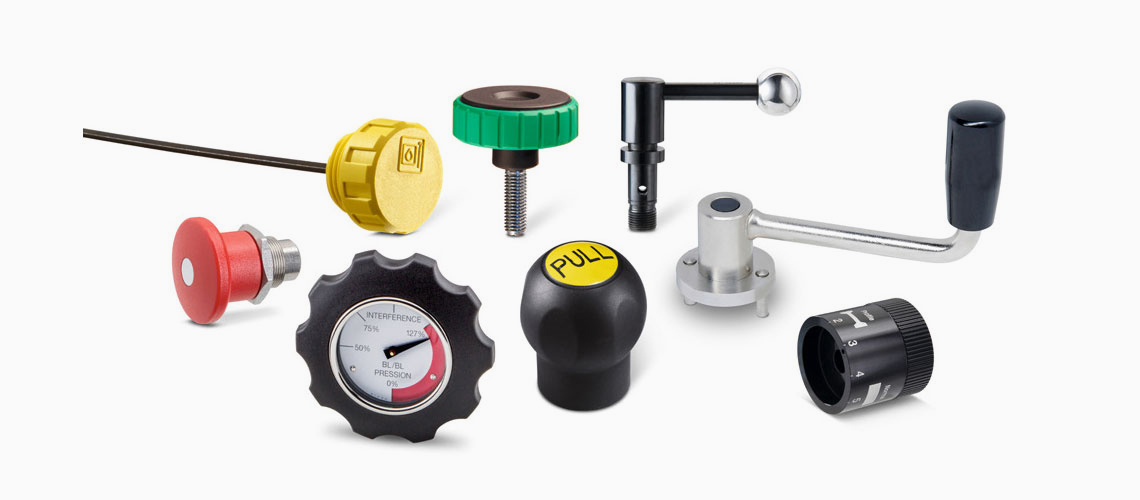1.2 Polyurethane wheel
A polyurethane wheel covering consists of an elastomer obtained exclusively from the synthesis of raw materials. Polyurethanes are chemical compounds obtained from a polymerisation reaction triggered by mixing two components, belonging to two different families of compounds (Di-Isocyanates and Polyalcohols), that were previously heated to temperatures that keep them in the liquid state with relatively low viscosity. In general, elastomer polyurethanes do not contain any additional mineral loads. The reactive mix is cast or injected into heated moulds containing the metal or plastic centres. Thanks to the temperature of the mould and of the wheel centre body, the polymerisation reaction can be completed inside the polyurethane, while the polyurethan is chemically linked to any adhesive that may be present on the surface of the wheel centre body.
- Mould-on polyurethane is no longer fusible, has good elasticity characteristics in addition to medium-high hardness and compression and traction strength.
- Injected polyurethane is fusible even after moulding; in general, it has inferior elasticity characteristics but superior hardness with respect to mould-on polyurethane.
- hardness UNI EN ISO 868:1999; ASTM D 2240-2004
- specific density UNI 7092:1972; ISO 2781:1988
- impact strength UNI 7716:2000; ISO 4662:1986
- abrasion loss UNI 9185:1988; DIN 53516:1987
- ultimate tensile strength UNI 6065:2001; ISO 37:1994; ASTM D 412c-1998
- ultimate elongation UNI 6065:2001; ISO 37:1994; ASTM D 412c-1998
- tearing resistance UNI 4914:1987; ASTM D 624b-2000
- compression set UNI ISO 815:2001
-
Generals
-
1. Plastic materials
- 1.1 Mechanical strength
- 1.2 Thermal resistance
- 1.3 Strength and surface hardness
- 1.4 Resistance to chemical agents
- 1.5 Resistance to atmospheric agents and uv rays
- 1.6 Flame resistance
- 1.7 Electrical properties
- 1.8 Surface finish and cleanability
- 1.9 Compliance with international standards
- 1.10 Competence of Elesa+Ganter technical department
- 2. Metal materials
- 3. Other materials
- 4. Machining tolerances
- 5. Fixed handles
- 6. Assembly measures
- 7. Special executions
- 8. Colours
- 9. Test values
-
10. Technical tables
- 10.1 Conversion tables
- 10.2 DIN 79 Square holes and shafts
- 10.3 DIN 6885 Keyways
- 10.4 GN 110 and GN 110.1 Transversal holes
- 10.5 DIN 13 ISO Metric threads
- 10.6 DIN 228 Cylindrical GAS-BSP threads
- 10.7 DIN EN ISO 898-1 | DIN EN 20898-2 Strenght values
- 10.8 DIN ISO 286 ISO-Fundamental tolerances
- 10.9 IP Protection Classification
- 10.10.1 PFB | PRB Thread locking with jamming action Polyamide patch coating/ Polyamide complete coating
- 10.10.2 MVK Thread locking gluing Micro encapsulation precote 80 (red)
- 10.11 Stainless Steel characteristics
- 10.12 Surface treatments
- 10.13 Carbon steel, zinc alloys, aluminium, brass characteristics
- 10.14.1 Duroplast, elastomer, technopolymer and rubber characteristics
- 10.14.2 Duroplast, elastomer, technopolymer and rubber characteristics
- 10.14.3 Duroplast, elastomer, technopolymer and rubber characteristics
- 10.15 Load ratings U-Handles
- 10.16 Load ratings metal hinges
- 10.17 Strength of indexing plungers
- 10.18 Assembly sets GN 965 and GN 968
- 11. Vibration-damping elements
-
1. Plastic materials
- Hygienic design
- Operating Elements
- Clamping knobs
- Control elements
- Rotary controls
- Indexing elements
- Joints
- Transmission elements
- Levelling elements
- Hinges
- Latches
- Toggle, power and hook clamps
- Accessories for hydraulic systems
- Tube clamp connectors
- Castors and wheels
- Magnets
- Conveyor components
- Linear slides
- Vibration mounts
- Vacuum components
- Elastomer springs



